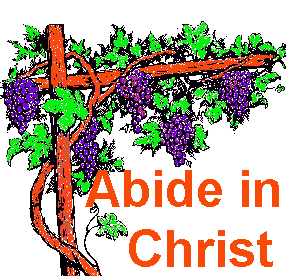"The Gift of Yahweh"
AUTHOR:
Matthew was written by one of the Twelve apostles.
He was a tax collector (publican) for the Roman
government (Matthew 9:9-13; Mark 2:14-17; Luke
5:27-32), and was known as Levi (Mark 2:14) before
Jesus chose him and changed his name to Matthew. He
gives an eye witness account of his experiences with
Jesus. Because he was a Roman tax collector he was
hated by the Jews. After his call to follow Jesus he
is not mentioned again except in Matthew 10:3; Mark
3:18; Luke 6:15 and Acts 1:13. There’s no solid
evidence as to what happened to him after the death
and resurrection of Christ. Tradition says he
preached in Palestine and later went to other lands.
DATE:
Matthew was written about the year A.D. 60, and was
written after the Gospel of Mark. The destruction of
the Temple (A. D. 70) by the Roman general Titus is
seen as an event yet in the future (Mat. 24:2). Most
scholars see Matthew as coming after Mark and place
it in the late 50’s or early 60’s.
RECIPIENTS:
Matthew writes to Jews and addresses the specific
problems Jews face in believing on Jesus as the
Messiah. Probably the first recipients were Jews
living in Palestine. He presupposes his readers will
know the geography of Palestine and its customs,
manners, and ceremonies. The other Gospel writers
take time to explain Jewish customs to non-Jewish
readers. With increasing crescendo the Jewish
leaders are warned and also denounced for their
false views. The increasing enmity of the religious
leaders is noted and illustrated until finally he
says: "The kingdom of God shall be taken from you,
and given to a nation bringing forth the fruits
thereof." However, the note of universality of the
Gospel is not missing. He closes with, "Go ye
therefore, and make disciples of all the nations."
THEME:
Matthew writes to the Jews and presents Jesus as the
Messiah, or the King of the Jews. The book of
Matthew logically furnishes the connecting link
between the Old and the New Covenant. He logically
ties the Old and the New Testaments by using over
sixty references to the Old Testament. He often
speaks of Jesus as the Son of David who is the true
Messiah, and he is the Son of Abraham (Mat. 1:1;
Genesis 12:3). The religious Jews of the first
century wanted to know who this "Jesus" was. Matthew
writes to provide them with incontestable answers
based upon objective observation of Jesus, and
accurate interpretation of the Hebrew Scriptures.
KEY VERSE:
Mat. 2:2
KEY WORDS:
kingdom, fulfilled
CHARACTERISTICS OF
MATTHEW
Russell Jones makes the
following observations:
1. "It is not
chronological but topical in arrangement." Matthew
groups and arranges his content for a definite
purpose. The Sermon on the Mount (chapters 5-7),
miracles of Jesus (8-9), parables (chapter 13),
Jesus addresses to the apostles (10), doctrines of
the kingdom (17:24-20:16), prophecy of the end of
times (24-25), and concludes with the death and
resurrection of Jesus.
2. "It is a Gospel of the
King. The royal descent of Jesus appears in the
genealogy." The Wise Men are seeking the King of the
Jews. John the Baptist announces the kingdom is
near. Jesus teaches the kingdom in parables.
Matthew’s Gospel is the "Gospel of the Kingdom."
Peter receives the "keys of the kingdom." When
judgment day comes all the nations are gathered
before the King to be judged (Mat. 25:34-40).
3. "It is a Jewish
Gospel. Matthew evidently wrote for the purpose of
convincing the Jews that Jesus was the Messiah."
Matthew takes pains to prove how Jesus fulfilled the
prophecies in the Old Testament. He always uses
Jewish terms, and does not take time to explain
these Jewish words or expressions because he assumes
his readers will already know them.
4. "It is the Gospel of
Discourse." Matthew arranges his material around
five great discourses.
5. "It is the Gospel of
the Church" (Mat. 16:18; 18:17). The word "church"
is not found in the other Gospels.
FIVE DISCOURSES IN
MATTHEW
1. Sermon on the Mount
(5-7), or the Law of the Kingdom
2. Teaching the 12
apostles (chapter 10), or the Preaching of the
Kingdom
3. Parables of the
Kingdom (chapter 13), or the Growth of the Kingdom
4. Life in God’s Kingdom
(chapter 18), or the Fellowship of the Kingdom
5. The end of the world
(chapter 24-25), or the Consummation of the Kingdom
Each teaching section
closes with the same statement, "When Jesus had
finished saying these things," or a similar
expression.
THE MESSIANIC THEME IN
MATTHEW
1. Fulfilled prophecies
of the Messiah’s coming (1:1-4:11).
2. The teachings of the
Messiah (4:12-7:29).
3. The Deity of the
Messiah revealed through miracles (8:1-11:1).
4. The Kingdom of the
Messiah revealed through parables (11:2-13:53).
5. The redemption of the
Messiah predicted (13:54-19:2).
6. The opposition by the
messiah’s enemies (19:3-26:2).
7. The passion of the
Messiah (26:3-28:10).
8. The Great Commission
of the Messiah (28:11-20).
Matthew appeals to the
deep-rooted Jewish Messianic beliefs in order to
present his proofs of the Messiahship of Jesus of
Nazareth. He carefully chooses his arguments from
the Old Testament to demonstrate the completeness of
the divine revelation and culmination of the Old
Testament writings. Every event recorded of Jesus
was foretold in the Old Testament. Moreover, every
prediction of the Messiah must find a corresponding
event in the life of Jesus of Nazareth. The central
point of his thesis as the Messiah is Peter’s
confession at Caesarea–Philippi in Matthew 16:13-20.
TITLE: Gospel of Matthew:
The King has Come
SERIES: Introduction
Bible Books



